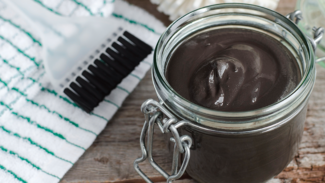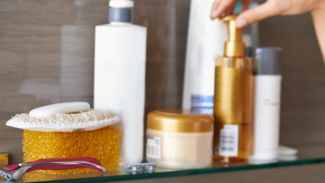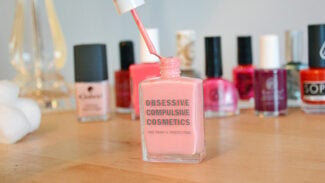Hiya Gorgeous,
We talk a lot about healthy beauty here at KrisCarr.com. Foundation, mascara, nail polish, you name it, we’ve either covered it or it’s in the works! Today, I’m tackling one of the trickier topics that readers ask me about time and time again—hair dye! You’re probably hip to the fact that the chemicals that color your hair can have some not-so-sexy effects on your health.
Over the years, I’ve had trouble finding safe and effective options. In other words, I needed this info just as much as you! And that’s why I asked Sophie Uliano, my go-to organic beauty expert to help out. Sophie is a New York Times best-selling author and internationally renowned Green and Healthy Living expert. Her latest book, Gorgeous for Good, is a 30-day skin-to-soul program aimed at completely transforming the way you feel.
Whether you’re trying to cover up pesky greys or just want to revamp your look with a fun new style, I hope this blog helps you make healthier choices. Ready? Let’s comb through this tangled topic together…
Kris: What are the worst offenders when it comes to chemicals found in common hair products? Basically, when we’re reading labels what should we stay away from?
Sophie: The most common “offender” would probably be phenylenediamine (PPD), also known as paraphenylenediamine, p-phenylenediamine or 1,4-benzenediamine. PPD is an organic compound used in hair dyes, as well as in rubber chemicals, textile dyes and pigments. Manufacturers like it because it has a low relative toxicity level and a high temperature stability. This chemical allows the dye to stay on your hair despite numerous washes. One big reason you want to avoid PPDs is that repeated exposure can cause you to develop allergic skin sensitization, which is basically when your immune system reacts to the chemicals on your skin.
Here’s the deal: In the past, you may not have had any symptoms of skin sensitivity to hair dye. And then one day while sitting in the salon chair, BAM! The dye is applied, your eyes start to water, you feel a burning sensation on your scalp and a red irritation begins creeping down from your hairline. This is how “skin sensitizers” work. Your body builds up a resistance toward the chemicals over time, and then one day you get a full-blown allergic reaction.
Even worse, you can become cross-sensitized. This means that you might also suddenly become allergic (and I mean severely allergic) to PPD’s chemical cousins, which can be found in textiles, inks, medication dyes, food dyes, perfumes and more.
Kris: So if you’re not a fan of your natural hair color, what’s the best way to dye your hair while also reducing or avoiding harmful effects of PPD and other chemicals?
Sophie: You’re better off using a hair dye that is free of PPD and ammonia. A line that I love for stylists (turn your stylist on to these guys!) is Simply Organic’s Hnectar hair color. You also might want to look at Radico Colour Me Organic for home dyeing with 100% natural and organic ingredients. (I actually think it’s better and less expensive to dye your hair at home!)
Kris: Are there different suggestions for blondes, brunettes or redheads?
Sophie: Blondes are often the toughest because without bleach it’s very hard to get that bright “lift” without brassy tones. If you want very blonde hair, you might want to consider using a safe, organic base color, and then have a smattering of bleach highlights added. The organic natural shades (especially with henna) are pretty amazing for both brunettes and redheads.
Kris: Do different approaches to dyeing your hair (highlights, roots only, full-process, bleaching, ombre) impact your health differently?
Sophie: Absolutely. If a “single-process/full-process” base color is applied, it sits directly on your scalp for a period of time. This is where the real damage to your health occurs. This is why I strongly recommend a safe, non-toxic base. Highlights and low-lights rarely come into contact with your scalp, so they aren’t nearly as detrimental. That being said, bleach gives off fumes that you inhale, and bleach in general isn’t the most eco-friendly ingredient either!
Kris: What’s the difference between store-bought and salon hair dye products when it comes to toxicity and effectiveness?
Sophie: It’s easier to check out the ingredients in store-bought dyes because the ingredients are listed on the box. If you purchase from a certified organic company, and you’ve done your homework on ingredients, you should be fine toxicity-wise. Most of the safer companies will clearly use verbiage such as “free of PPD” etc. Some brands display a laundry list of chemicals that they don’t use, which is also useful.
As far as efficacy is concerned, you just have to try them out. Hair color is so personal—what works for me might not work for you, and vice versa. Most store-bought dyes will work (as in dye your hair for the specified amount of time), but shades in different brands vary.
When it comes to salon dyes, you have to dig deeper. If you have a close relationship with your stylist/colorist, you could ask him/her what brand they use. Most stylists use the brands that give the best aesthetic results, but that aren’t necessarily the healthiest.
You then have two choices at the salon: You can ask your colorist if they would be willing to try out an organic brand (you might have to show them the website), or you can do a Google search to find an “organic” hair salon in your area. I got my stylist to train to use a brand I like and trust. Many of the really great brands like Simply Organic (mentioned above) provide special training for salons.









This is an awesome article and also helpful. Thanks for this post.
Amazing post! It contains good information about hair coloring. This is really helpful! Thanks for sharing!
Loving your natural dye tips! I dyed my hair blonde not too long ago, and I’ve found that Pump Haircare’s Blonde Mask has been great at keeping my hair nice and healthy and non-brassy – it’s also vegan friendly and completely sulfate free! https://pumphaircare.com/collections/blonde/products/pump-blonde-hair-mask
This hair dye is great, I also want to try dye my hair.
One may find it difficult on what to dye hair next, however what you wrote above makes much sense. Nevertheless on this article one can also decide what style to dye their hair and what colors as not everyone will suit to the same style.
Thanks for sharing the information I came across your blog and found the article is very unique very few people write on it. It is very important for a person to take care of their hair, as a hair enthusiast, i always prefer biotin hair care products which are free from sulphates and chemical.
Useful article on hair coloring. I suddenly found out about the benefits of coconut oil.
good work..keep it up..